Thursday 5th January 2023

There are some great bus routes along the northern coastlines of Somerset, Devon and Cornwall especially since Cornwall Council won the bus support funding lottery and First Bus found they could prosper by attracting the leisure travel market.
I’ve ridden the complete coastline a few times over the last few years – not all in one go – I’m too old for that malarkey and it would take two or three days in any event but last Saturday saw me having a lovely trip south from Barnstaple via Bude to Wadebridge and I can thoroughly recommend the journey which can easily be accomplished in half a day on three buses.
Stagecoach have a significant presence in north Devon based on Barnstaple with bus routes radiating in many directions including north to Ilfracombe and Croyde and south to Bideford, Appledore and Westward Ho! as well as inland to Great Torrington.

I began my trip on route 319 which comprises four journeys a day from Barnstaple to Hartland with a fifth mid morning journey running just from Bideford to Hartland.
The route is funded by Devon County Council with four of the journeys providing a decent connection in Hartland with the Cornwall Council funded route 219 which continues south to Bude.
I caught route 319’s first journey of the day from Barnstaple’s rather austere bus station at 09:00.
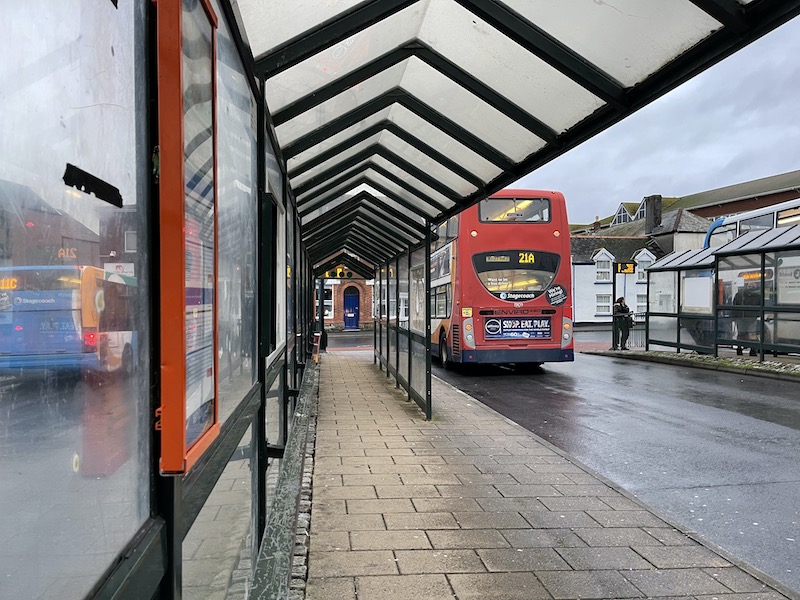
What the bus station lacks in passenger comforts it makes up for with a couple of very helpful Devon County Council produced maps displayed at the departure stands as well as full timetables.
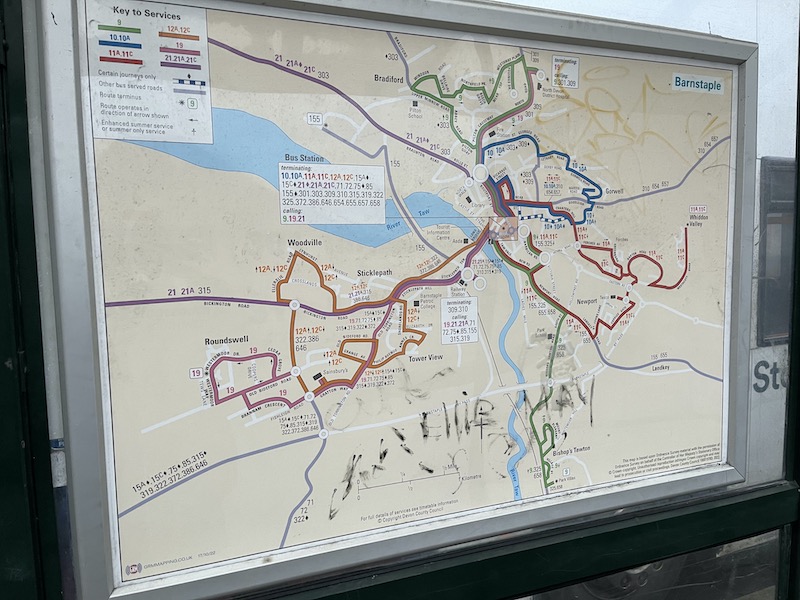
There’s a map of the local Barnstaple route network (pictured above) and another showing the wider network (below), both taken from the Council’s excellent timetable books.

The driver appeared at 08:55 and got the bus, which had been on the stand for some time, ready for an on time departure. A double deck was a bonus.

You don’t get any coastal views on this route but there’s some great scenery along the way and much of interest to see.

Leaving Barnstaple involves using the traffic light controlled single track bus only section of road by the town’s rail station which uses a short alignment of the long closed railway line to Ilfracombe.

A number of bus routes which link Barnstaple and Bideford use the A39 dual carriageway fast link rather than the old road through Fermington and Instow. To access this involves another section of bus only road – not bad for a mid size town.
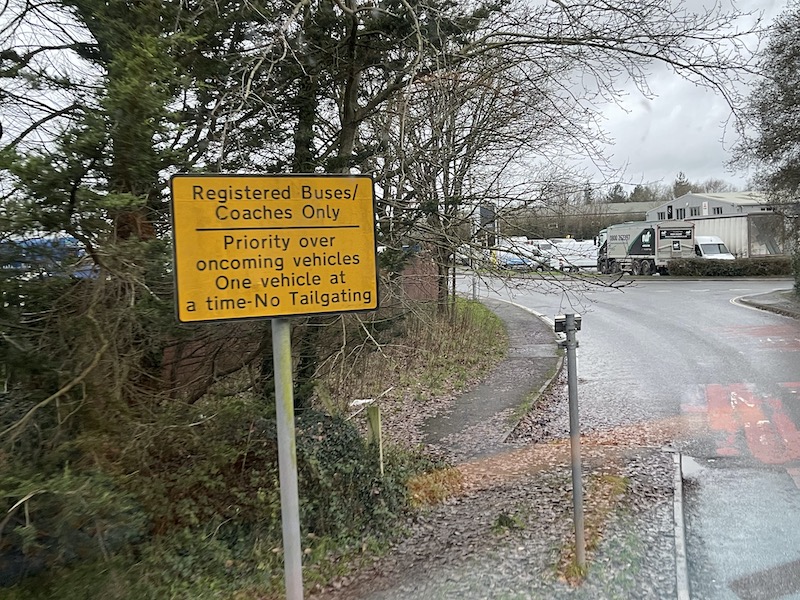
We reached Bideford in 25 minutes which included some fast driving along the A39 and dropped the three passengers off who’d boarded in Barnstaple bus station.

Five passengers joined in Bideford with one alighting five minutes later in nearby Abbotsham, one at the gorgeous pair of bus shelters (either side of the road) ….
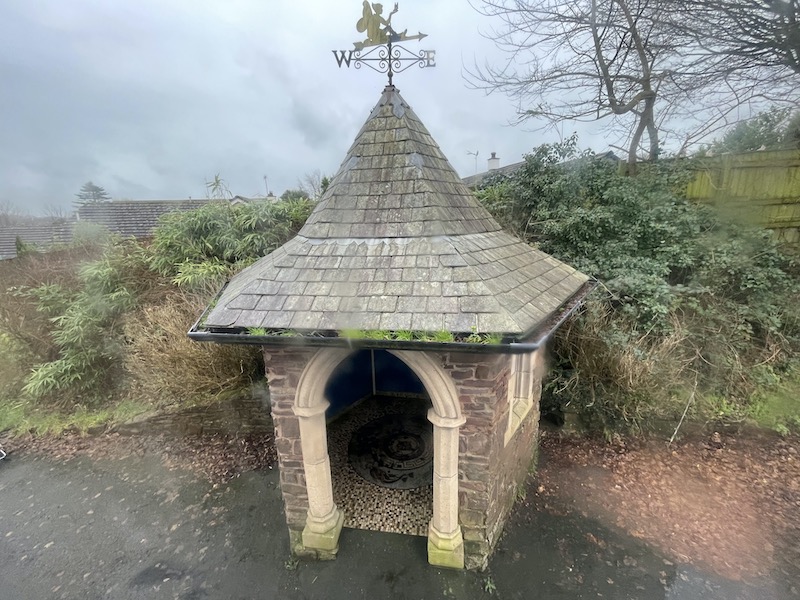
…. at the delightfully named Fairy Cross….

…. two teens got off at the Milky Way Adenture Park at Burnstone which we did a short dogleg off the main road to serve as others were already gathering for a morning’s multi award winning fun at 09:55 for its 10:00 opening (oddly, the only southbound journey of the five to do so) ….

…. and our final passenger alighted at the next stop at Clovelly Cross. This first journey strangely doesn’t do the dogleg to serve Clovelly’s Visitor Centre for Clovelly itself, but the other four do.
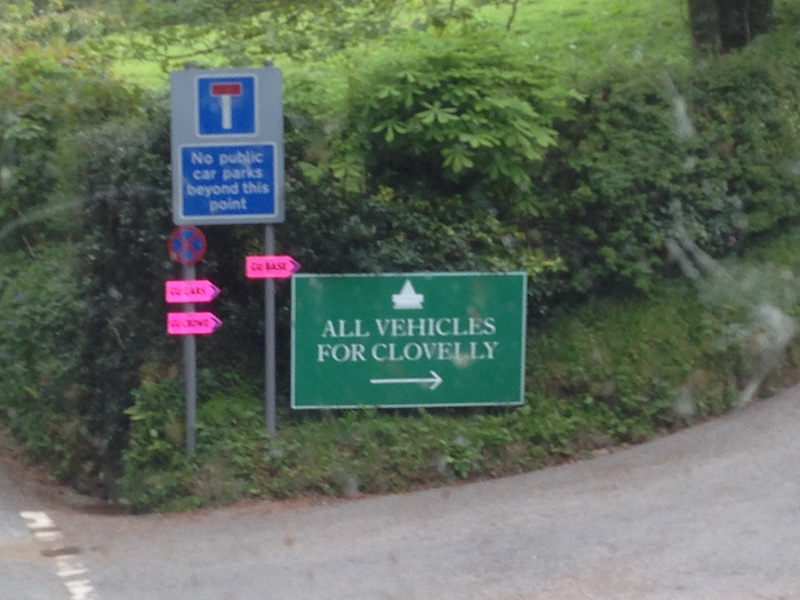
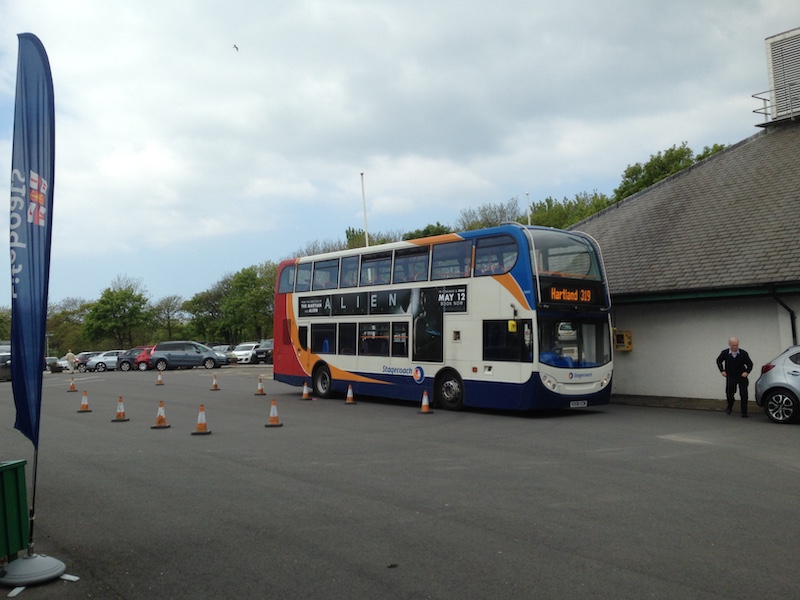
I’ve done this on a previous visit and it really is a must do destination.
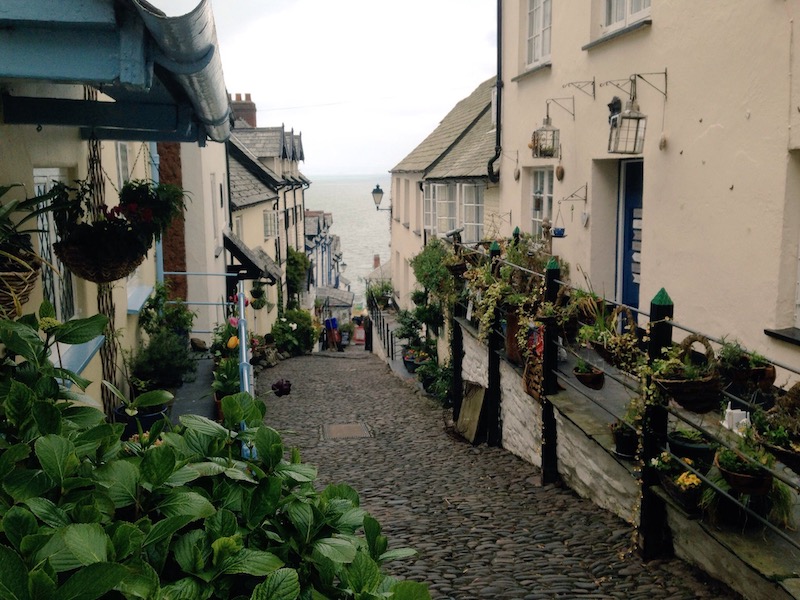
On Saturday it was just me on board for the final ten minutes of the journey to reach the 319’s terminus at Hartland at 10:07 and just as we arrived in the village the Go Cornwall bus also appeared on the connecting route 219 …
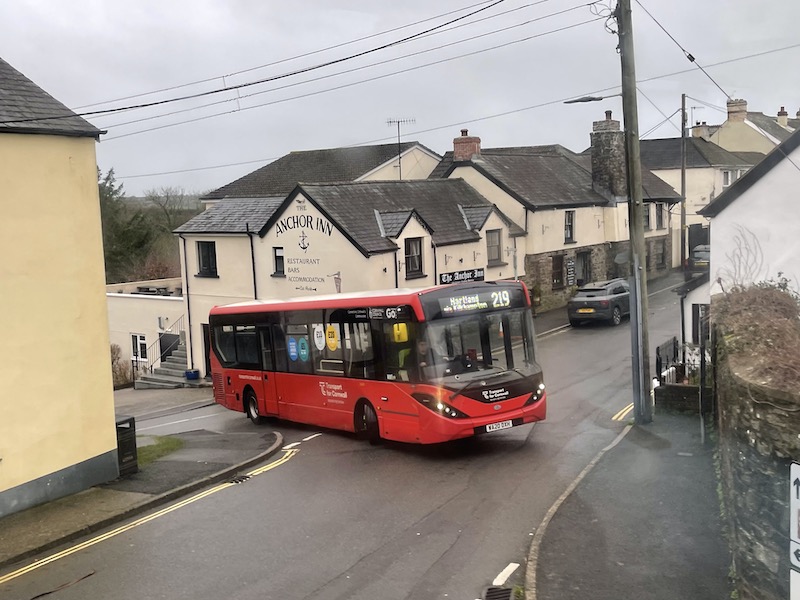
… which was reassuring, following us to the fire station where both buses did a u-turn to wait for their respective return journeys.
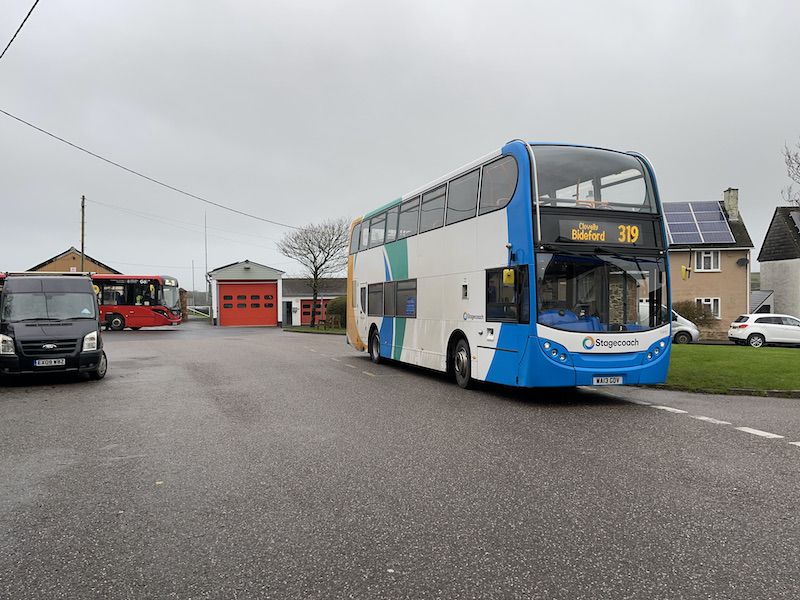
The 319 left at 10:15 bound for Bideford with one passenger on board and my 219 left as scheduled at 10:25 with just me on board.

It takes 19 minutes to reach Kilkhampton, the first village along the route and we picked up our only passenger for the journey who travelled to Bude. The 219 takes two different routes after Kirkhampton with three of the seven journeys operating via Red Post (as shown on the above Cornwall map) and the other three operate via the direct route (not shown on the map), although my journey ran via Stibb (not shown on the above map or timetable, but ironically shown on the Devon map – displayed further above).
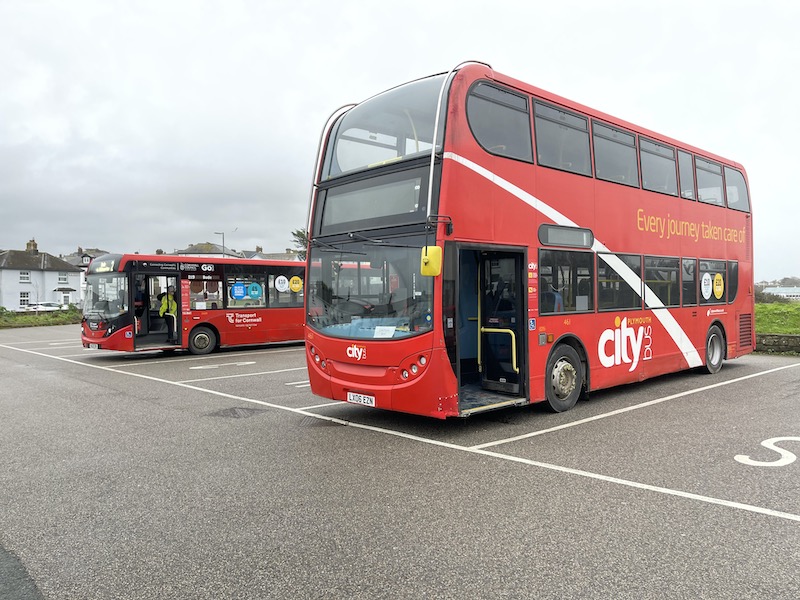
Before reaching the main bus stop known as The Strand in Bude we did a quick driver changeover in the car park by the Tourist Information Office and arrived on time at 11:03.
I did a quick change to the two-hourly route 95 at The Strand which left at 11:10 going all the way to Newquay, taking a lengthy two hours and 52 minutes.

We left with three passengers one of whom alighted after a few bus stops as we left Bude, one travelled a bit further and the other all the way to Wadebridge.
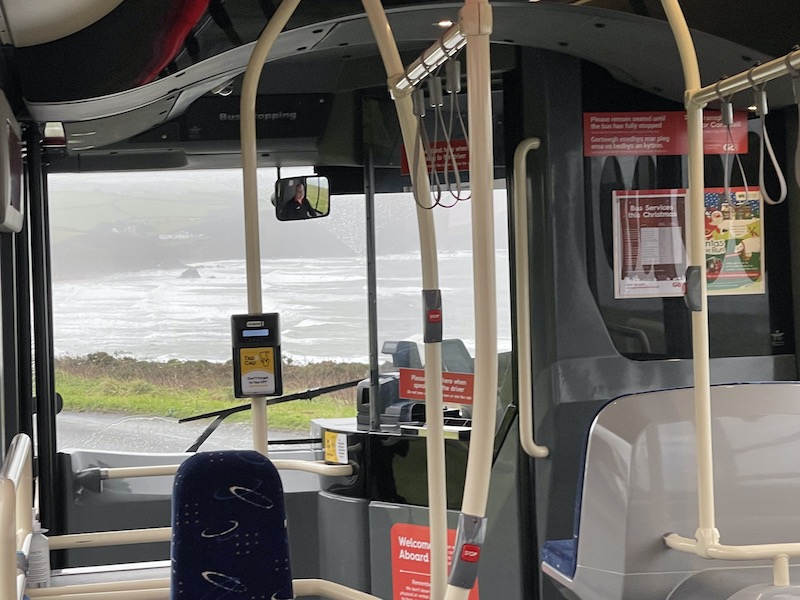
The 95 offers some serious Atlantic Coast views as the bus takes the unclassified (and narrow) coastal road from Bude through Lynstone and Widemouth Bay before rejoining the A39 for s stretch between Treskinnick Cross and Wainhouse Corner (with a passenger boarding at the former for the short ride to the General Stores at the latter) where we then turned back to the coast to serve Crackington Haven as well as the famous coastal communities at Boscastle and Tintagel.

A couple of rucksack carrying passengers took a ride with us between Boscastle and Tintagel while another two boarded at Tintagel, one taking the short ride to Trewarmett and the other to Wadebridge.
After 80 minutes we reached Camelford where there’s an opportunity to change buses on to route 96 for more coastal delights including Port Isaac and Polzeath – another superb route which I’ve taken a couple of times before but on Saturday I stayed with the 95 (with four more passenger boarding – two travelling just a few stops and the other two to Wadebridge) and enjoyed the rural delights of St Teath and Trelill before once again we rejoined the A39 for the run into Wadebridge.

I left the bus at Wadebridge as it continued on to Newquay via St Columb Major as a bus on route 96 left the terminus heading for the coastal route north round to Camelford and then south to Bodmin.
For complete Atlantic Coast bus riding, use the following bus routes….
- First West of England 20 Weston-super-Mare to Burnham-on-Sea
- Buses of Somerset route 21 Burnham-on-Sea to Taunton (inland)
- Buses of Somerset route 28 Taunton to Minehead (inland)
- Exmoor Coaster Taunton to Lynmouth (extending to Ilfracombe summer 2023)
- (Then) Stagecoach 21 Ilfracombe to Barnstaple
- (Until then) Filers 310 Lynmouth/Linton to Barnstaple
- Stagecoach 319 Barnstaple to Hartland
- Go Cornwall Bus 219 Hartland to Bude
- Go Cornwall Bus 95 to Bude Camelford
- Go Cornwall Bus 96 Camelford to Wadebridge
- Go Cornwall Bus 11 Wadebridge to Padstow
- Go Cornwall Bus 56 Padstow to Newquay (Summer Atlantic Coaster)
- First Kernow U1 Newquay to St Agnes
- Hopley’s Coaches 315 St Agnes to Redruth (Summer Coaster/Sunseeker options available)
- First Kernow T2 Redruth to St Ives (inland) (Summer Coaster/Sunseeker options available)
- Lands End Coaster St Ives to Lands End (and Penzance).
It’s a journey well worth experiencing and taking the bus is by far the best way to enjoy this lovely stretch of coastline.
Roger French
Blogging timetable: 06:00 TThS

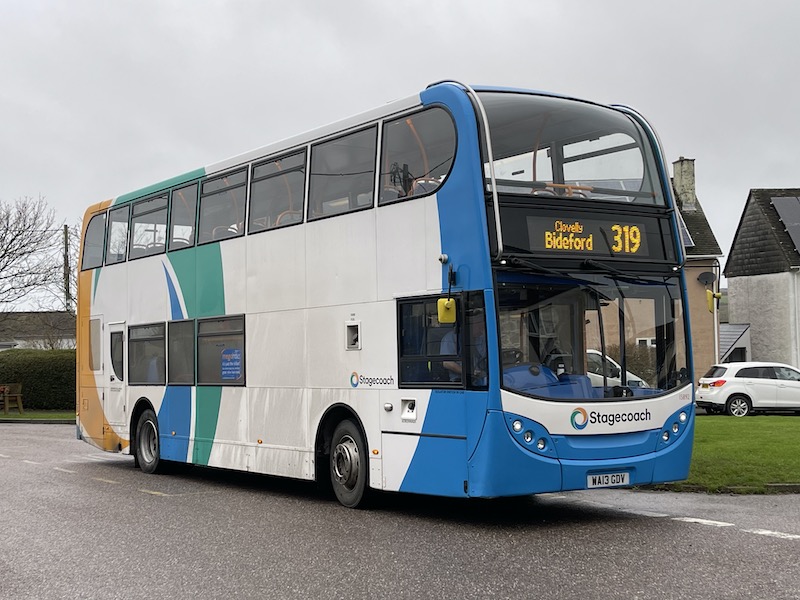
Great blog as always
A slight correction to your list: the 315 is operated by Hopley’s Coaches, not GCB.
LikeLike
Great blog as always. A small correction to your list: the 315 is operated by Hopley’s Coaches, not GCB.
LikeLike
Many thanks; will correct that.
LikeLike
We rode quite a few buses in the Lake District and around Hadrian’s Wall last summer and were shocked by how expensive they were. By comparison the bus journeys we took in North Devon seemed much more reasonably priced.
LikeLiked by 1 person
Should Harland read Hartland?
LikeLike
Oops; not sure what happened to the ‘t’ now corrected. Thanks.
LikeLike
I’ve done the same trip (in equally inclement weather) from Bideford to Bude. Really nice across the Atlantic Highway on the rolling hills rather than a coastal jaunt. The 319 is seemingly a decker route, at least Mon-Fri, because of schools traffic. The connection in Hartland is well managed too.
Doubt it’ll ever get the same treatment as First South West’s Coaster (not really a touristy run) but definitely a nice place to spend a day
LikeLiked by 1 person
The service 20 from Weston to Burnham is operated by First West of England (Badgerline) not Buses of Somerset
LikeLike
Thanks; have updated.
LikeLike
Yes, these are great routes, but are they sustainable when there are so few passengers? Plenty of publicity needed and get those bums on seats!
LikeLiked by 1 person
Excellent , if only I lived nearby.
The Government must encourage people to get back on public transport after the years of Covid propaganda telling people to avoid it.
How can buses survive with such pitiful loadings on so many routes?
LikeLiked by 1 person
Hi I live st just and regularly take the Landsend Coaster to st ives. It’s a fantastic route, dramatic cliff tops above the sea and ancient stone walled fields. Unfortunately in the winter there is only a few buses in either direction each day. In summer they are every hour. Just relax and enjoy the view’s.
LikeLiked by 1 person
Unfortunately Roger isn’t the most unfortunate problem about most of the bus services you used across Devon & Cornwall in rural areas there is simply no one onboard save a handful. Would anyone really miss most of these routes if they didn’t run as here across Worcestershire the majority simply do not use the bus and the resources involved could be targeted more sucessfully elsewhere.
LikeLike
I wonder if it’s actually the other way around? Yes, there are areas where the bus is popular, but they are the exception, not the rule.
What saves the West Country services is the, admittedly sometimes seasonal, tourists. Like Roger, indeed.
But most bus routes have no one to save them, in the absence of public money. It was no surprise when a local MP survey faced by a Mayor wanting to emulate Greater Manchester, came up with the result that a quarter of us wouldn’t use the bus under any circumstances, nor a half for regular travel because it’s simply too unreliable. Waiting an hour or longer for a bus that should be quarter or half hourly is a normal experience, except of course for armchair enthusiasts. Locally we had the case of a 90 year old, who had to spend a night in a public toilet because the bus didn’t run due to congestion. How anyone thinks that is acceptable quite escapes me.
Sadly perhaps for our dreams, the logical thing would be to ban conventional buses from urban/town centres to reduce stop/start congestion , or from competition with DRT services to save them, as a more efficient use of resources; and put the resources into tourist services, where reliability isn’t so critical.
I just don’t get how an empty bus is considered environmentally friendly! It’s surely the most wasteful form of mechanised transport.
LikeLiked by 1 person
Just one question for bus managers. I know reliability has been the top priority for the last fifty (or sixty) years. You’ve told us so, constantly. Just how long are the passengers expected to wait?
LikeLiked by 1 person
Reliability is the key. These days I only use public transport when it doesn’t matter very much whether I get there on time or not. Ironically, a few years ago, I used the bus from Bude to Morwenstowe, then walked a few miles down the coast with the plan to catch the bus back into Bude. It didn’t turn up, and I had to hitch a lift into Bude to catch the last bus of the day to Okehampton.
LikeLiked by 1 person
Perhaps sadly, though it’s taken me too long to realise; in our modern world unreliability (or instability) isn’t a by-product of
the system. It’s integral to it. What’s the benefit? Any change is good, I suppose.
LikeLiked by 1 person
Another nice blog there Roger. Even in the winter the views are still very pleasant to see, but I think this should benefit all the passengers throughout the bus. The one who will seat behind the driver on the offside seats will not see much out from the front. I’ve seen from a preserved Dart (L401VCV) that the wall behind the driver is replaced by a transparent glass, allowing everyone to see in front of the driver. It also seems to be the case for halfcab buses, as the seats behind the driver still get a somewhat decent view out of the front. Why manufacturers don’t think of this is beyond me!
LikeLike